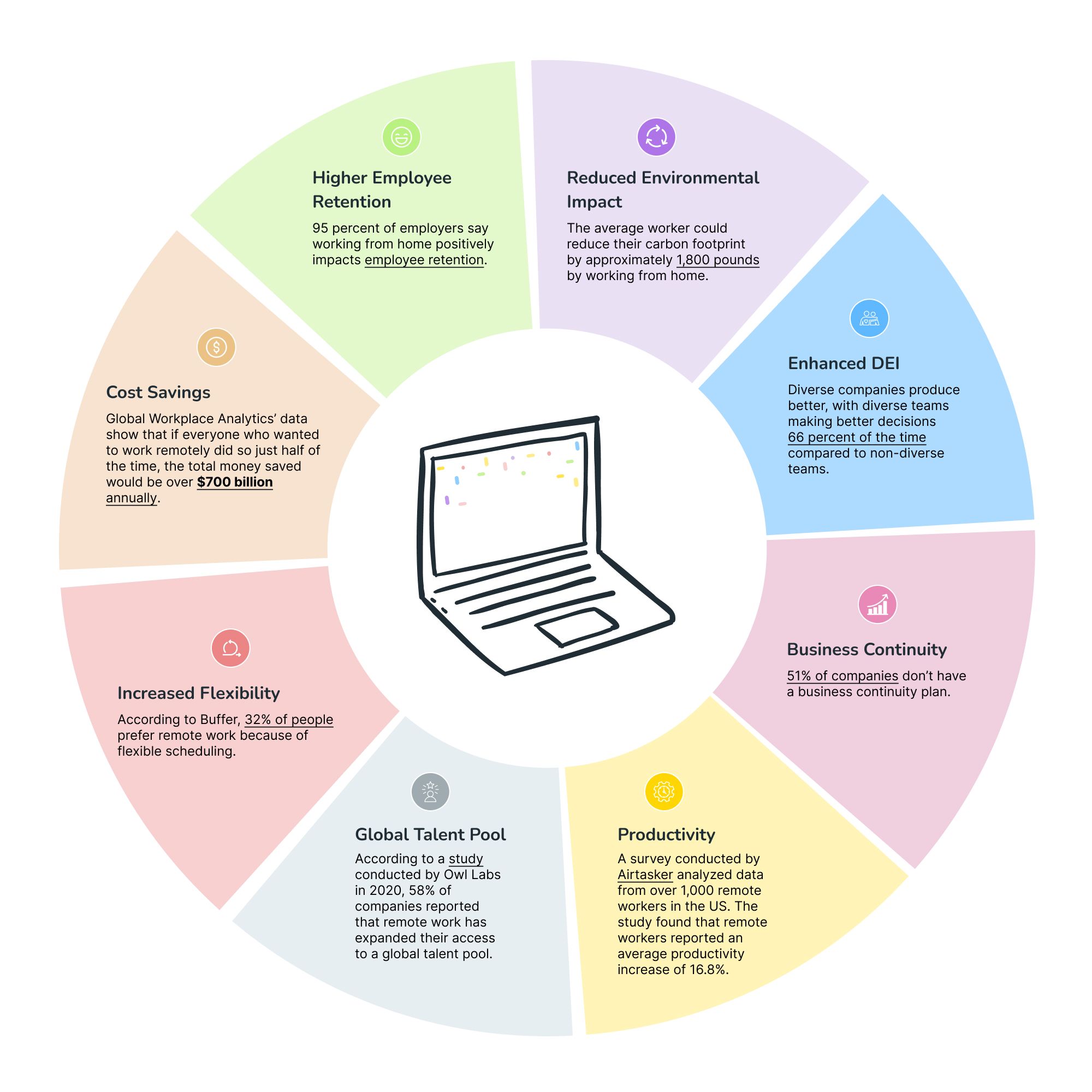There’s no way you could’ve missed the work-from-home revolution that came upon us in recent years thanks to technological improvements and, of course, Covid-19.
In fact, remote work has become so popular that the percentage of people working from home in the U.S. went from 5% to 37% right at the height of the pandemic. Today, a few years later, 35% of workers who can work remotely continue to do so today.
In software engineering those numbers are way out of this world - out of the estimated 27 million software engineers in the world about 86 % currently working do so from home.
So, what has contributed to this paradigm shift? In short, the internet, being everywhere and faster, and collaboration tools, which are getting better and more suited to software developer needs.
Why Do Software Engineers Prefer a “Remote Office”?
Remote work can take different forms. Some developers work remotely full-time from home, maybe even in a co-working space, comfort permitting. It’s a huge plus because they don’t have to be physically present at a traditional office and are not constrained by commuting or office hours. Others may have a hybrid arrangement, splitting their time between working remotely and coming into the office on certain days or for specific meetings.
At our small-but-cozy software boutique, we already had distributed teams, and it worked great! Why? Because we were using all the communication and collaboration tools necessary to ensure high engagement and connectivity. All that was left was to figure out a way to have effective one-on-one meetings and performance reviews. With all the bad the pandemic brought, it did help us put a system in place to support each other when burnout crept up on us.

Remote-First vs Remote Work?
Remote work and remote-first are two related concepts that describe different approaches to organizing and prioritizing remote work within a company.
Here's the difference between them:
Remote Work
As mentioned above, remote work refers to the practice of working outside of a traditional office environment, whether it's from home, a co-working space, or anywhere with an internet signal 📡
In a remote work setup, employees have the flexibility to work remotely either full-time or part-time, depending on the company's approach and the employee's role. Companies can adopt remote work as a flexible work option to accommodate employees' needs or as a strategic approach to access a broader talent pool.
Remote-First
Remote-first is when a company prioritizes remote work as the default way of operating. In a remote-first approach, the company's culture, processes, and infrastructure are intentionally designed to have remote workers’ best interests at heart.
They make sure there are equal opportunities, available resources, and access to information just like their colleagues would have in the office. This includes the use of digital collaboration tools and establishing effective communication practices. They also work towards optimizing the remote work experience by fostering a sense of belonging and inclusion for remote employees.
What Are Some Myths About Remote Work?
While remote work has gained popularity and acceptance, there are still some misconceptions surrounding this paradigm shift.
Here are some common myths about remote work:
Myth: “Remote workers aren’t as productive as in-office workers.”
Reality: Numerous studies have shown that remote workers can be just as productive, if not more so, than their office-based counterparts. Remote work allows for greater focus, fewer distractions, and the ability to work during one's most productive hours.
Myth: “I can call my remote worker any time - they’re always available.”
Reality: Remote work doesn’t mean being available 24/7 as remote workers are not only bound by timezones but by human needs. Just like office-based employees, remote workers have set working hours and boundaries. They need time for breaks, rest, and personal commitments.
Myth: “Remote working is lonely and isolating.”
Reality: While remote workers may lack face-to-face interactions, they can still do things to improve social connectedness. Remote workers often make efforts to foster virtual social connections, participate in online communities, or utilize co-working spaces for socializing.
Myth: “Remote working is bad for collaboration and teamwork.”
Reality: Collaboration can be just as bad in-office as working remotely. But with the advancements in digital collaboration tools, remote work can actually enhance collaboration and teamwork. Video conferencing, project management tools, and instant messaging platforms enable remote employees to communicate effectively, share ideas, and collaborate on projects in real-time. We use Slack, Miro, and Figma, and trust me - it helps a lot!
Myth: “Remote working is only good for certain roles or industries.”
Reality: From Culinary Consultant to TeleNeurology, remote work can be applicable to a wide range of roles and industries. While some jobs may require on-site presence, technological advancements have made remote work possible in fields like software development, marketing, customer service, writing, design, and many others.
What Are the Benefits of Remote Work?
There are tons of benefits to both employees and employers regarding remote work.
Here are just some of the top advantages of remote work:
Increased Flexibility
Remote work provides employees with greater flexibility in managing their work schedules. They can often choose when and where they work, allowing for a better work-life balance. This flexibility is super important and enables employees to accommodate personal obligations, pursue hobbies, or take care of family needs.
Improved Productivity
Many studies have shown that remote workers can be more productive than their office-based counterparts. Remote employees can often create a personalized work environment that suits their preferences and minimizes distractions. This is especially important for software developers who thrive off flow.
Additionally, remote workers can structure their day to optimize their productivity, avoiding lengthy commutes and office interruptions.
Cost Savings
Remote work can result in significant cost savings for both employees and employers. Employees can save money on commuting expenses, parking fees, and work-related meals. Employers can reduce office space costs and associated overhead expenses, such as utilities and office supplies.
Access to a Global Talent Pool
Remote work allows employers to tap into a diverse and global talent pool. Without the limitations of geographic proximity, companies can recruit the best talent regardless of their location. This broadens the talent pool and increases the potential for finding highly skilled individuals.
Higher Employee Retention
Because of the freedom remote work provides, employees tend to be happier and have higher job satisfaction. That results in higher retention rates. Offering remote work options can be an attractive perk for employees, leading to higher engagement and loyalty. Employees who value flexibility and work-life balance are more likely to stay with a company that supports remote work.
Reduced Environmental Impact
Remote work can contribute to a more sustainable future by reducing carbon emissions associated with commuting. With fewer employees commuting daily, there is a decrease in traffic congestion and air pollution. Remote work also minimizes the need for physical office spaces, which reduces energy consumption and waste.
Enhanced Diversity and Inclusion
Remote work can foster diversity and inclusion within companies. By removing geographical barriers, companies can hire individuals from various backgrounds, cultures, and demographics. Remote work can create a more inclusive work environment that values diverse perspectives and experiences.
Business Continuity
Remote work offers resilience in times of crisis or unexpected disruptions. When faced with natural disasters, health emergencies, or other unforeseen events, companies with remote work capabilities can continue their operations with minimal interruption. Remote work provides a level of flexibility and adaptability that can help businesses navigate challenging circumstances.





